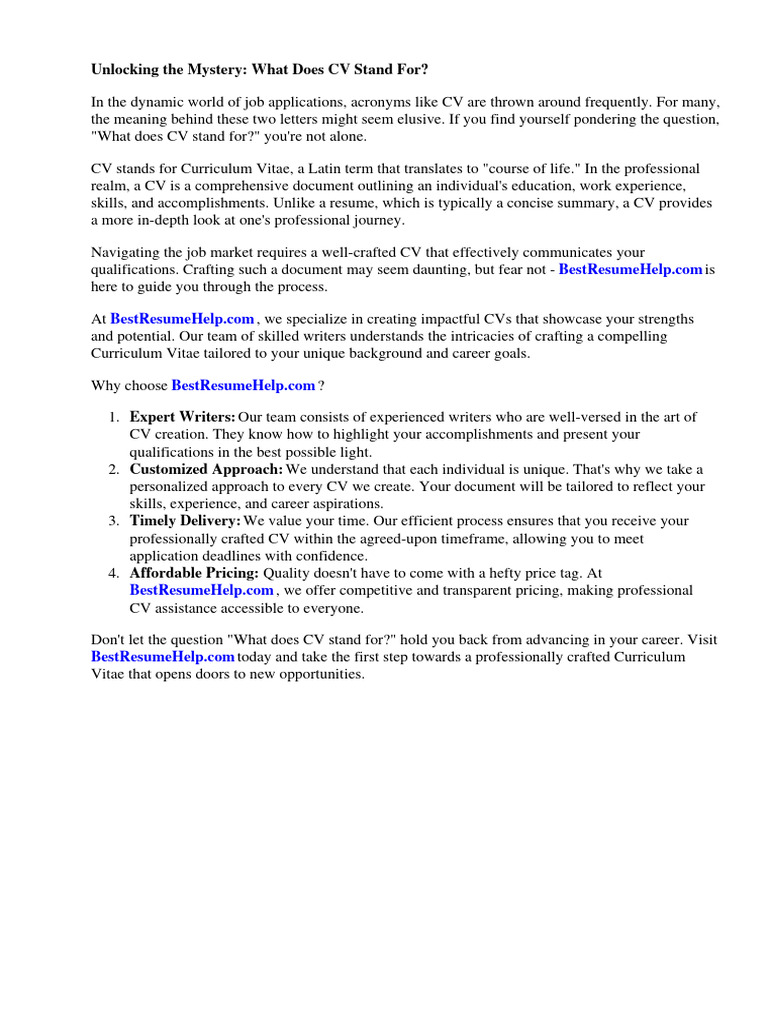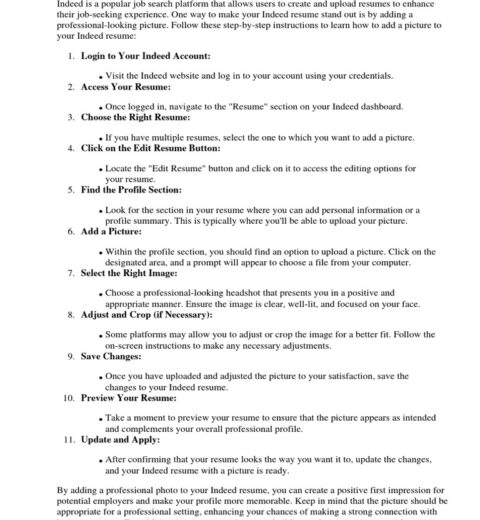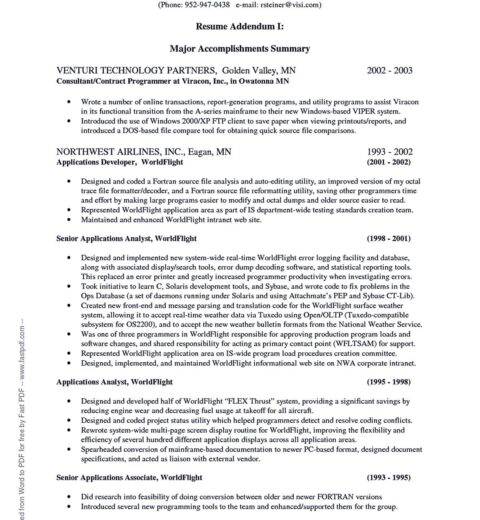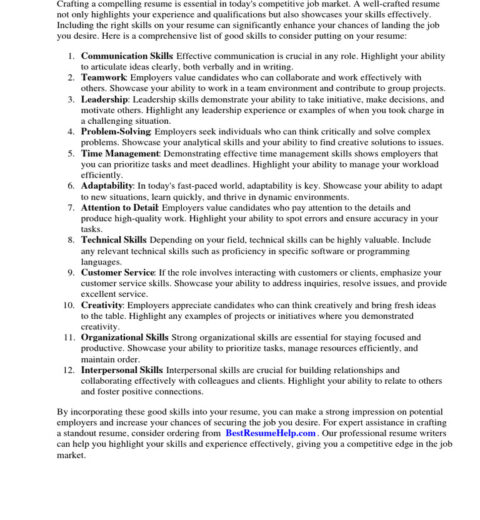In the realm of job applications, the abbreviation “CV” often emerges as a focal point of discussion and sometimes confusion. The term “Curriculum Vitae” fills a prominent role, yet its usage fluctuates greatly across different countries and contexts. Understanding the nuances of what a CV entails and how it juxtaposes with a resume can significantly enhance one’s ability to navigate the job market effectively.
The phrase “Curriculum Vitae” translates from Latin to “course of life,” underscoring its function as a comprehensive account of an individual’s educational background, work history, skills, and accomplishments. Unlike a resume, which is typically a brief, targeted document of one or two pages designed to pique a potential employer’s interest, a CV often spans multiple pages, providing a more extensive overview of a candidate’s qualifications.
The differentiation between a CV and a resume is particularly pronounced in various cultural landscapes. In the United States, a resume is the preferred application document, favored for its brevity and specificity. Conversely, in many European countries, as well as regions such as Asia and Africa, the term CV is used interchangeably with resume, although it often entails a more detailed portrayal of professional experiences, including publications, research, and professional affiliations.
Understanding global terminology is critical, as it reflects the cultural nuances and expectations of employers across different geographical spectrums. For instance, in the UK, job seekers are typically expected to submit a CV. This document thoroughly showcases not only work experience and education but also personal achievements and additional skills such as volunteer work, which may be deemed pertinent. The expectation here is for a CV to paint a more holistic picture of the candidate, accentuating aspects of their personality and character in conjunction with professional qualifications.
Furthermore, when discussing what constitutes an effective CV, one must consider the audience it targets. A well-crafted CV tells a compelling story about a candidate’s career trajectory, highlighting achievements in a manner that engages potential employers. It transforms a list of qualifications into a narrative that speaks volumes about the applicant’s suitability for a position. This narrative should also be adaptable; the core content may remain stable, yet the emphasis on specific achievements or experiences should pivot depending on the job in question.
More than mere technicalities, grasping the essence of a CV prompts a shift in perspective on self-presentation. It cultivates an appreciation for not only displaying what one has accomplished but also framing those accomplishments to resonate with prospective employers. It’s crucial that candidates are aware of how to tailor their CV for particular roles or industries. For example, an academic CV necessitates extensive detailing of research publications and teaching experiences, while a corporate CV might focus more on skills relevant to the business environment, such as leadership or project management capabilities.
Another aspect that sets a CV apart is its static nature over time. Unlike a resume, which may be frequently updated and modified for various applications, a CV evolves more gradually. It incorporates new skills, experiences, and accomplishments as one progresses through their career. This long-term accumulation of professional experiences provides a comprehensive overview of one’s professional life that can be beneficial not only for job applications but also for initiatives like networking and mentorship opportunities.
Addressing the question of format, a CV should be presented with clarity and professionalism. Generally, it should include sections such as personal information, educational background, work experience, publications, conferences, and references. Each section should be organized logically, allowing hiring managers to navigate through pertinent details seamlessly. Clear headings, bullet points for easy reading, and consistent formatting throughout the document are vital components of a polished CV.
As a burgeoning trend, digital CVs — often referred to as e-portfolios — are increasing in popularity. These digital profiles allow candidates to showcase their skills through interactive mediums, embedding links to work samples, videos, and other digital artifacts. This dynamic approach can captivate potential employers and offer a distinctive representation not attainable through traditional paper formats.
In conclusion, while the acronym CV might seem straightforward, its implications and practices are anything but simple. Understanding the definitions, variations, and best practices surrounding CVs can transform the documentation of one’s professional journey from a mere formality into an impactful narrative. Navigating the global landscape of job applications necessitates not only awareness of what a CV represents but also an appreciation for how to optimally present oneself within that framework. Cultivating this knowledge invokes a profound shift in perspective, elevating one’s approach to job hunting and career advancement. Ultimately, a well-constructed CV is more than a document; it is a door to future opportunities, a testament to one’s professional capabilities, and a key that opens up new horizons in the job market.




